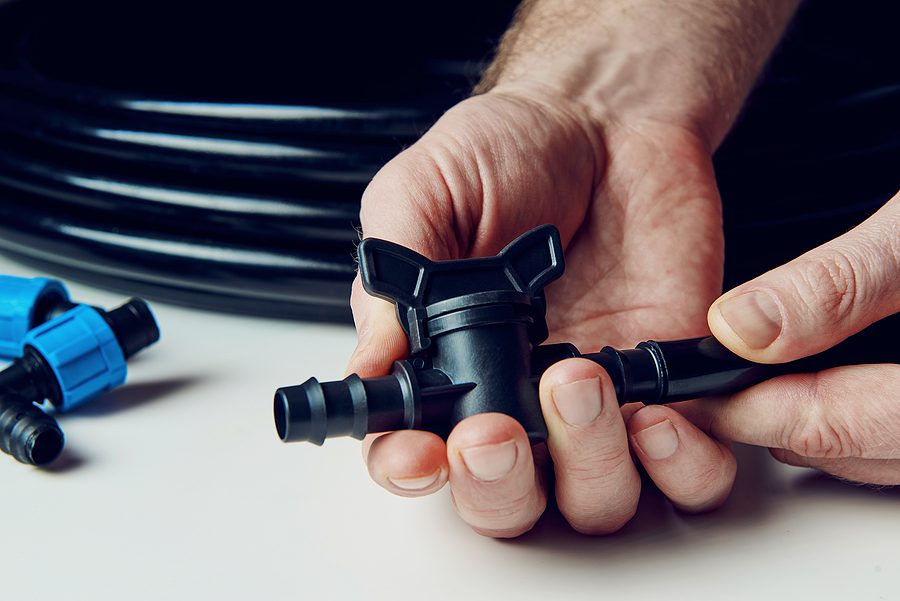Hey Albuquerque—Here’s How a Drip Irrigation System Operates

Water is crucial for growing plants. Even if you live in a region that gets substantial amounts of rainfall, it is likely you will need to water your crops sometimes. This can be due to seasonal dryness or multiyear droughts.
For a few potted plants or even a small garden, it is possible to water your plants with a garden hose or a watering can. For bigger areas, like a lawn, farm, or vegetable, or flower garden, irrigation makes a sensible answer.
Besides saving you the time of standing outside with a watering can or hose, a good drip irrigation system can save you money and benefit the environment. It can significantly reduce your water use. The right watering system will give plants exactly the amount of water when and where they need it.
If you have been wondering how irrigation systems work, R & S Landscaping, Inc. offers you this primer on the different types of water systems.
Types of Irrigation Systems
Three main types of irrigation are popular for growing. Flooding has been used since the days of ancient Egypt, where the Nile River was diverted to flood fields. Gravity typically has been used to move water over the ground. Today, the flooding method remains common for rice paddies.
Overhead irrigation is a very popular type of irrigation. You will see this type of irrigation in use on everything from residential lawns to large farms. Types of overhead irrigation range from sprinklers for small lawns and garden water guns and movable booms for large agricultural operations.
Drip irrigation, also sometimes called trickle irrigation, is growing in popularity. This type of system uses low water pressure and drip emitters to deliver small amounts of water. Because it delivers water slowly and precisely, drip irrigation can drastically reduce water use, boost water and nutrient absorption, and cut down on weed growth.
How an Irrigation System Works
So, how do irrigation systems work, anyway? First, you must have a water source, of course. Some folks pump water from ponds, lakes, rivers, and other natural sources, while others pump their water from wells. Many people attach their irrigation systems to municipal water systems.
If you are wondering how a drip irrigation system works, the answer is simple. Whether it is hooked up to a natural or municipal water source, a drip system uses very low pressure to provide water slowly to crops.
A drip system typically has a mainline to carry water from the source to tubing fitted with drip emitters to water individual plants. Drip tape may also be used (and you can find out how much you need with our Drip Tape Estimator).
A filter can help keep a drip system from clogging and adding a timer can make operation completely automatic. That means the gardener or farmer does not have to be present for watering. Conveniently, drip systems may be installed on the ground or even underground.
Parts of an Irrigation System
Although each water system is different, there are some key components many share. An irrigation system hooked up to a residence or municipal water system needs a backflow preventer to keep contaminants from the irrigation system from getting into potable water.
Most systems have a mainline for delivering water from the source and zone lines for providing water to parts of a plot. Valves are necessary to turn the water on and off.
As mentioned before, a controller or timer can be added to make irrigation systems fully automatic. That means gardeners and growers can water plants at pre-set times without anyone even having to be on-site to turn the water on and off.
For those just starting out, an irrigation kit is the best option to make sure you have all the parts you need for this efficient watering system.
If it turns out that installing a drip irrigation system at your Albuquerque home is more than than you want to take on, give the Albuquerque drip irrigation professionals a call at 505-271-8419.
